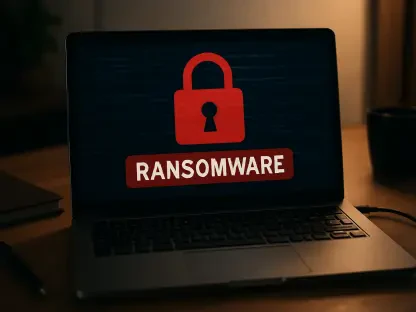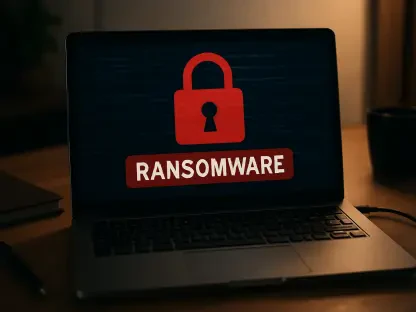In the digital battlefield of cybersecurity, the war between malware developers and security professionals never ceases. A new variant of the infamous Snake Keylogger, primarily targeting Windows users in Asia and Europe, illustrates how cybercriminals continue to evolve their strategies and techniques. This variant, distinguished by its use of AutoIt scripting for deployment and added obfuscation layers, presents unique challenges in detection and response. Understanding the intricacies of its operation is vital for strengthening defenses against such sophisticated threats.
Obfuscation and Execution Techniques
Complex AutoIt Scripting and Deployment
The new variant of Snake Keylogger employs AutoIt scripting for deployment, a key tactic that significantly contributes to its evasion capabilities. AutoIt, a well-known scripting language, is traditionally used for automating mundane tasks on the Windows platform. By leveraging AutoIt, the keylogger seamlessly blends into legitimate operations, complicating the task of static analysis.
The malware’s executable file is wrapped in an AutoIt-compiled binary, adding multiple layers of obfuscation. This obfuscation mimics the behavior of benign automation tools and makes distinguishing the malware from genuine automation scripts arduous for traditional antivirus solutions. When executed, the keylogger copies itself to the %Local_AppData%\supergroup directory, renaming itself as ageless[.]exe and assigning hidden attributes to its files. Concurrently, it installs ageless[.]vbs in the Startup folder to ensure it runs automatically whenever the system reboots, thereby maintaining persistence.
Leveraging Process Hollowing for Stealth
After successfully deploying its files, the keylogger utilizes the sophisticated technique of process hollowing to further evade detection. Process hollowing involves injecting malicious code into a legitimate process. In this instance, Snake Keylogger targets the legitimate RegSvcs.exe process, spawning it in a suspended state before hollowing it out and replacing its code with the keylogger’s malicious instructions.
This approach provides substantial stealth advantages, as it enables the malware to masquerade under the guise of a trusted and legitimate process. Consequently, the affected system continues operating normally from the user’s perspective while the malware operates covertly in the background, gathering sensitive information without triggering alarm bells with conventional security mechanisms.
Stealthy Keylogging Operations
Integrating SetWindowsHookEx for Keystroke Monitoring
One of the core functionalities of the Snake Keylogger is its ability to monitor and log keystrokes, thus enabling it to exfiltrate sensitive information such as credentials, credit card numbers, and private communications. The malware achieves this by employing the SetWindowsHookEx API with the WH_KEYBOARD_LL parameter. This enables it to install a low-level keyboard input event hook, capturing every keystroke entered by the user.
This keystroke logging functionality becomes even more insidious as the keylogger targets commonly used web browsers such as Chrome, Edge, and Firefox. By specifically focusing on these popular browsers, the malware maximizes its potential for harvesting valuable data. The integration of SetWindowsHookEx provides Snake Keylogger with a robust mechanism for continuously monitoring user activity and intercepting sensitive information.
Data Exfiltration and Command-and-Control Communication
Once the Snake Keylogger captures sensitive data, it employs multiple exfiltration methods to communicate this information back to its command-and-control (C2) servers. These methodologies include utilizing SMTP email, Telegram bots, and HTTP POST requests, a variety of channels ensuring that even if one method is blocked or detected, others may still succeed.
Moreover, the keylogger attempts to fetch the victim’s public IP address through hxxp://checkip[.]dyndns[.]org. This information not only aids in the rough geolocation of the target but also adds another layer to the data compiled on the victim, which can be valuable for further targeted attacks or for understanding the distribution of infections.
Persistence Tactics and Implications
Use of Windows Startup Folder
The Snake Keylogger’s strategy for maintaining persistence on infected systems includes the exploitation of the Windows Startup folder. By placing ageless[.]vbs within this folder, the keylogger ensures that it is executed every time the system restarts. This method exploits a common feature of Windows systems, further aiding the malware in evading detection by security tools that might miss these seemingly benign startup entries.
This tactic is particularly effective due to its simplicity and reliability. By embedding its payload into the routine startup process of the operating system, the keylogger minimizes the risk of removal during routine system maintenance or user interventions. As a result, the malware remains embedded in the system long term, continuously collecting and exfiltrating data.
The Increasing Sophistication of Malware
The evolution of malware, as evidenced by the Snake Keylogger, indicates a broader trend toward increasing sophistication among cybercriminals. The integration of scripting tools such as AutoIt to create standalone executables that mimic legitimate automation tasks demonstrates an advanced understanding of both the targeted systems and the defenses protecting them. This trend is concerning for security professionals because it highlights the evolving threat landscape and the need for continuously improving detection and response strategies.
Utilizing techniques like process hollowing and manipulating system startup processes not only circumvents many traditional security measures but also ensures that the malware remains active and persistent. This dynamic underscores the importance of adopting more advanced, behavior-based detection mechanisms and comprehensive monitoring to identify and mitigate such sophisticated threats effectively.
Future Considerations
Strengthening Detection and Response Capabilities
Analyzing the tactics employed by this new variant of Snake Keylogger underscores the critical need for evolving cybersecurity defenses. The reliance on traditional antivirus and static analysis tools is no longer sufficient to combat these increasingly sophisticated threats. Security professionals must now prioritize the development and implementation of behavior-based detection and advanced threat hunting techniques to identify suspicious activity indicative of malware presence.
A multi-layered security approach, incorporating machine learning and artificial intelligence, could greatly enhance the ability to detect anomalies that deviate from normal system behaviors. By focusing on these anomalies, security teams can better identify and neutralize threats before they escalate, thereby mitigating potential damage and data breaches.
Collaboration and Education
In the digital battleground of cybersecurity, a perpetual war rages between malware developers and security experts. A new variant of the notorious Snake Keylogger, mainly aimed at Windows users in Asia and Europe, exemplifies the relentless evolution of cybercriminal tactics. This variant stands out due to its use of AutoIt scripting for deployment and additional layers of obfuscation, posing distinct challenges for detection and response efforts.
The ongoing battle in the cybersecurity realm continues as hackers and cyber defenses perpetually adapt and counter-adapt. The latest variant of Snake Keylogger is a testament to the sophistication and continuous advancement of malicious actors. AutoIt scripting, newly utilized in this variant, provides a more complex deployment mechanism, making it harder to pinpoint and neutralize. Moreover, the added obfuscation layers make traditional detection methods less effective, necessitating an updated and more nuanced understanding of such threats. Grasping the depths of its operation is crucial for bolstering defenses against these advanced and evolving cybersecurity threats.









